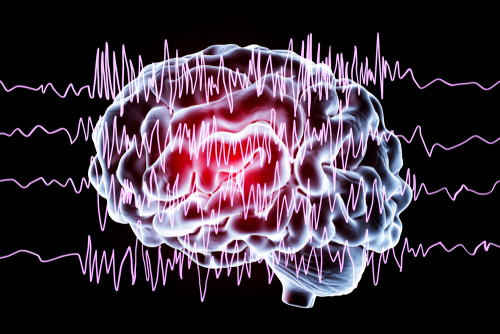Ethyl alcohol, or ethanol, according to the Centers for Disease Control and Prevention (CDC) “is an intoxicating ingredient found in beer, wine, and liquor. Alcohol is produced by the fermentation of yeast, sugars, and starches.” As a central nervous system depressant, alcohol works by slowing down vital functions in one’s body. After an individual consumes alcohol, it is absorbed from the small intestine and stomach into his or her bloodstream and is then metabolized in the liver. The liver, however, is only able to metabolize a small amount of alcohol at a time, which leaves excess alcohol to circulate throughout one’s body via the bloodstream. With habitual alcohol abuse, one’s body becomes more accustomed to functioning with alcohol in its system than without, and when the body lacks alcohol, it will react, and physiological withdrawal symptoms will ensue.
Delirium tremens (DT) is scientifically defined as “the most severe form of ethanol withdrawal, manifested by altered mental status (global confusion) and sympathetic overdrive (autonomic hyperactivity), which can progress to cardiovascular collapse.” Delirium tremens is widely known as the most dangerous, and potentially fatal, withdrawal symptom that can occur when detoxing from alcohol. The undeniable connection between alcohol abuse and delirium tremens dates to 1813 when DT was first recognized and universally accepted as a disorder specifically attributed to alcohol abuse. Excessive alcohol use, according to the Centers for Disease Control and Prevention includes males drinking more than five alcoholic beverages within a two-hour period and females consuming more than four alcoholic drinks within a two-hour window. One standard drink is outlined as:
- 12 ounces of regular beer (5% alcohol content)
- 8 – 9 ounces of malt liquor (7% alcohol content)
- 5 ounces of unfortified wine (12% alcohol content)
- 1.5 ounces of 80-proof hard liquor (40% alcohol content)
There are certain risk factors that can increase one’s susceptibility for developing delirium tremens, which include the following, according to Winchester Hospital:
- Seizure history
- Heart disease
- Liver disease
- Chronic alcohol abuse
- History of delirium tremens
It is impossible to provide an accurate answer regarding how much alcohol an individual must drink to develop delirium tremens, as each person is unique and there is a variety of contributing factors. Delirium tremens are a medical emergency, and when not medically attended to can become fatal.
For Information and Support
If you are concerned for yourself or a loved one regarding substance abuse and/ or addiction, we recommend reaching out for help as soon as possible. If left untreated, substance abuse can result in long-lasting and potentially life-threatening consequences. Keep in mind: you are not alone! There is an entire network of professionals that are available to help and support you and your loved one throughout the recovery process. The earlier you seek support, the sooner your loved one can return to a happy, healthy, and fulfilling life.
Please do not hesitate to reach out with any questions regarding our specific program at Haven House Addiction Treatment and/ or general substance abuse and/ or addiction treatment-related information. Our highly trained staff is readily available to discuss how we might best be able to help you and your loved one. We can be reached by phone at 424-258-6792. You are also welcome to contact us anytime via email at admissions@hhtxc.com.



